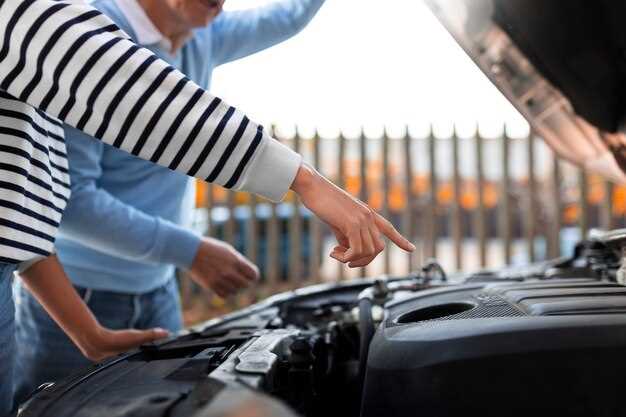
Maintaining your foreign car requires careful attention to various components, and one of the most critical is the battery. Over time, all batteries lose their efficiency and ability to hold a charge, especially in the diverse climates and driving conditions that these vehicles often face. Recognizing the signs that indicate a need for battery replacement can save you from unexpected breakdowns and expensive repairs.
First and foremost, it’s essential to monitor your battery’s performance. If you notice a decrease in engine cranking speed, frequent jump-starts, or a check battery warning light illuminated on your dashboard, these can be clear indicators that your battery is nearing the end of its lifespan. Foreign cars, with their advanced electronics, may exhibit symptoms that can be misconstrued as other issues, making it even more critical to evaluate battery health regularly.
Moreover, environmental factors play a significant role in battery longevity. Extreme temperatures, whether hot or cold, can drastically affect a battery’s ability to function effectively. If your foreign car has been exposed to harsh conditions and shows signs of corrosion or damage at the terminals, it’s wise to consider a replacement. Understanding these signs is vital for ensuring your vehicle remains reliable and efficient on the road.
Identifying Warning Signs of Battery Failure

Recognizing the signs of battery failure is crucial for maintaining the performance of your foreign car. A failing battery can lead to unexpected breakdowns, leaving you stranded. Here are key indicators to watch for:
Firstly, if you notice your engine cranking slowly when you start the vehicle, it may indicate that the battery is losing its charge. This sluggish response is a common sign of a battery nearing the end of its life.
Secondly, check for dimming headlights or interior lights. If you observe that these lights become noticeably less bright, especially when the engine is idling, this could point to an issue with the battery’s ability to hold a charge effectively.
Another warning sign is the presence of corrosion around battery terminals. A white, ashy substance or greenish residue indicates chemical leakage. This can hinder performance and signal that the battery needs replacement.
If your car’s electronic systems are malfunctioning or behaving erratically, this may also be attributed to battery problems. Issues such as malfunctioning power windows, radio cuts, or dashboard warning lights can all stem from a failing battery.
Lastly, paying attention to the age of your battery is essential. Most car batteries have a lifespan of 3 to 5 years. If your battery is approaching this age and shows any of the previous signs, it is wise to consider a replacement.
Understanding Battery Lifespan for Foreign Vehicles

The lifespan of a car battery typically ranges between three to five years, but this can vary significantly for foreign vehicles due to differences in design, materials, and technology. Many foreign car manufacturers utilize advanced battery technology, which may provide additional benefits but could also present unique challenges.
One important factor influencing battery lifespan is climate. Extreme temperatures, whether hot or cold, can affect battery performance. For instance, foreign vehicles often utilize batteries designed to operate optimally in specific conditions, and exposure to extreme temperatures can accelerate wear and tear.
Another aspect to consider is the charging system of foreign cars. Vehicles from different regions may have varying alternator configurations and voltage requirements. This can impact how effectively the battery is charged and its longevity. Regularly checking the alternator’s performance is essential, as a malfunctioning alternator can lead to premature battery failure.
The usage patterns of foreign vehicles also play a role in battery lifespan. Cars that are frequently driven for short trips may experience reduced battery life, as the battery does not have enough time to recharge fully. In contrast, longer drives can help maintain optimal battery health.
Furthermore, the quality of the battery itself should not be overlooked. Genuine parts or high-quality aftermarket batteries that meet specific manufacturer standards are more likely to last longer than cheaper alternatives. Investing in a quality battery can save you from the inconvenience of frequent replacements and potential damage to your vehicle.
To prolong the lifespan of your car battery, regular maintenance is crucial. This includes checking the battery terminals for corrosion, ensuring the connections are tight, and keeping the battery clean from debris. Additionally, following the manufacturer’s recommendations regarding battery care and monitoring its condition can help you determine when it’s time for a replacement.
Steps for Safe Battery Replacement in Import Cars
Replacing the battery in your import car can be a straightforward process if done correctly. Follow these essential steps to ensure a safe and effective battery replacement.
1. Gather Necessary Tools and Materials
Before beginning, collect all necessary tools and materials. You will need a new battery compatible with your car, a wrench or socket set, a battery terminal cleaner or brush, safety goggles, and gloves. Make sure you have a multimeter to check the old battery’s charge if needed.
2. Safety First
Always prioritize safety. Wear gloves and goggles to protect yourself from acid leaks and sparks. Ensure that the vehicle is parked on a level surface, the ignition is off, and the keys are removed from the ignition. Additionally, turn off any electrical accessories before starting the replacement.
3. Locate the Battery
Open the hood of your car and locate the battery. In some import cars, the battery may be in the trunk or under the rear seat. Refer to your owner’s manual for the exact location.
4. Disconnect the Negative Terminal First
Using your wrench, carefully disconnect the negative terminal (usually marked with a minus sign -). This step reduces the risk of a short circuit. Once the negative terminal is removed, proceed to disconnect the positive terminal (marked with a plus sign +).
5. Remove the Old Battery
After disconnecting both terminals, remove any clamps or brackets securing the battery. Carefully lift it out of the battery tray, making sure to maintain a steady grip to avoid dropping it.
6. Clean the Battery Tray and Terminals
Before installing the new battery, clean the battery tray and the terminal connectors with a battery terminal cleaner or brush. This ensures a good connection and helps prevent corrosion.
7. Install the New Battery
Place the new battery in the tray, ensuring it sits securely. Reattach any clamps or brackets that hold the battery in place. Connect the positive terminal first, followed by the negative terminal. Ensure both terminals are tight and free from corrosion.
8. Test the New Battery
Once installed, turn on the ignition to check if everything functions correctly. If your car has electrical systems dependent on battery power, ensure these operate as expected. You can use a multimeter to test the voltage if necessary.
9. Dispose of the Old Battery Properly
Many retailers offer recycling programs for old batteries. Ensure that you dispose of the old battery in an environmentally friendly manner by taking it to a designated recycling center or returning it to the place of purchase.
By following these steps, you can safely and effectively replace the battery in your import car, ensuring reliable performance and longevity of your vehicle.




